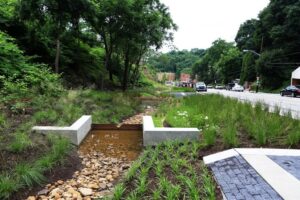
From WIRED.com Science – “Where once there were forests and fields and wetlands that would soak up the rain, these have been paved over and replaced with surfaces that do not absorb rain,” says Michael Kiparsky, director of the Wheeler Water Institute at the University of California, Berkeley. Those are hard materials like concrete sidewalks, asphalt roads, and roofs, which funnel runoff into gutters, storm drains, and sewers. Less pavement and more green spaces help absorb water instead of funneling it all away—a win-win for people and urban ecosystems. By deploying thirsty green spaces and digging huge dirt bowls where water can gather and percolate into underlying aquifers, “sponge cities” are making rain an asset to be exploited instead of expelled. (more)

